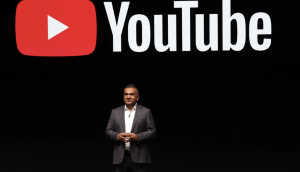The Canadian Media Directors’ Council held its annual 20/20 Vision conference in Toronto this week. This year’s conference adhered to the theme of “Magic and Logic,” highlighting the intersection of science and creativity in the media and marketing industries.
With discussions that ranged from the topics of AI and online chess to the mythified “deep web” and everything in between, MiC has gathered the top four insights from the day for marketers, agencies and media professionals to take away.
End the marriage with short-termism and bring back long-term objectives
Holding up the logic end of the conference’s theme was Peter Field (pictured above), who co-authors the Institute of Practitioners in Advertising’s (IPA) brand case study reports in the U.K. While apologizing more than once for ranting, he warned against the dangers of “short-termism” – a reliance on short-term objectives that perform best on a six-month cycle but often come at the expense of more long term growth. Why the over-reliance on short-term objectives? Field cited both high CMO turnover in the industry and a desire to consistently show growth in every quarter. He lauded Unilever CEO Paul Polman, who famously cancelled its quarterly reports because, Field said, marketing and advertising don’t work on a 90-day cycle.
Field offered his ideal split for a campaign – 60% long-term brand building and 40% short-term activation. In the U.K., this ratio has shifted to close to 50/50. He said the percentage of cases that use short-term objectives has been rising steadily since 2006, with a steeper incline since 2012. That incline is paired with a drop in the campaign effectiveness reported in case studies submitted to the IPA’s award programs.
A growth in short-term objectives has brought real-time tight targeting up along with it, which is also to the detriment of brand building, said Field. Longer-term objectives benefit more from broad-targeting on platforms like TV, he said.
Data is nothing without the human connection
Opening speaker Kevin Slavin, assistant professor and founder of the Playful Systems Group at the MIT Media Lab, dove into the droves of data available in the modern age — and all the mistakes it’s led to. Highlights of some failures included the incorrect predictions of the 2016 U.S. election, numerous market crashes caused by flawed algorithms and, his most-cited example, the 2015 New York City blizzard that never was (which he referred to as the “snow crash”).
In an age where data, automation and machine learning are taking over, Slavin argued that human interpretation is more crucial than ever.”The machine can’t explain what it doesn’t understand,” he said. “We’re going to start to embrace a new phrase known as ‘human in the loop,’ where processes are optimized for human engagement within the decision making process.”
Examples he used of ideal machine/person combinations in media included Spotify’s curated playlists (those curated by editorial staff with the help of data tools are more popular than those curated by algorithms alone), as well as how Netflix uses data to improve its original programming.
“What’s important is that [Netflix] didn’t turn [its viewer data] over to Ross Goodwin to write a love story,” said Slavin, referring to the AI researcher who created the screenplay for the short romantic drama film Sunspring using algorithms. “Instead, they turn it over to David Fincher to write House of Cards,” which has earned great critical and audience praise across four seasons. “What’s more important is [Fincher] accepted some of it, and he rejected some of it. That’s what should have happened with the snow crash.”
The lines of media are completely blurred
Zenith’s head of innovation Tom Goodwin had a lot to say at the conference (MiC caught up with Goodwin prior to the day to dive further into his views). But during his talk, with topics that spanned the excitement of Airbnb and the innovation (or lack thereof) of mid-roll advertising in digital video, Goodwin frequently addressed the blurring lines of media, both from a digital and traditional perspective. For the teens of today, he said, asking them how many hours a day they spend online is all but irrelevant.
“For [teenagers], there is no internet,” he said, referring to the “always on” nature of the generation. “The idea that we ‘go online’ is a really strange idea to them.”
At the same time, he said, with the rise of OTT, on-demand, mobile viewing and watching YouTube on a television set, the definition of TV seems to be both fluid and undetermined. “We don’t even know what TV is anymore,” said Goodwin. “Is it a quality thing? Is it a context thing?” And that definition matters more than advertisers think. “You read all these things that say ‘TV is dead’ or ‘digital is eating TV.’ None of it matters until we decide what TV is.”
Privacy concerns will become advertisers’ problem
Actor and filmmaker Alex Winter, who directed the documentary The Deep Web (a term used for unindexed content on the internet that can be used for private and sometimes illegal activity), spoke about the advances in privacy tools in an increasingly data-obsessed world. With more platforms such as Facebook trading some data to advertisers, he said, consumers may soon take more measures to protect their data.
“I’m sure some of you guys [in the audience] work for companies that require access to people’s data,” he said. “It’s easier for hackers to access personal data if that data is being traded and sold by companies, however benign the reasons.” While Winter did not propose any solutions, he predicted (and warned) that as people become more aware of these risks, they will “go dark” by utilizing more anonymity tools like VPNs and encryption services. “The idea of privacy in the digital space is about to hit the mainstream, and that will be big business.”
With files from Val Maloney
























